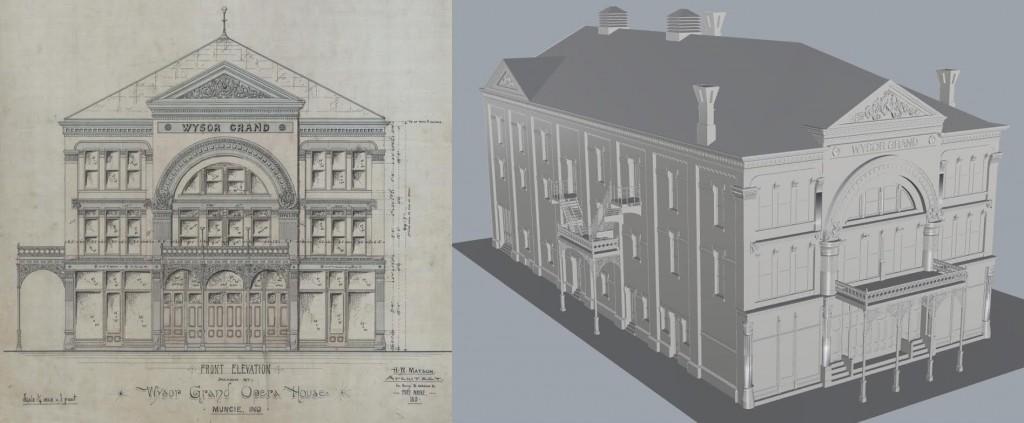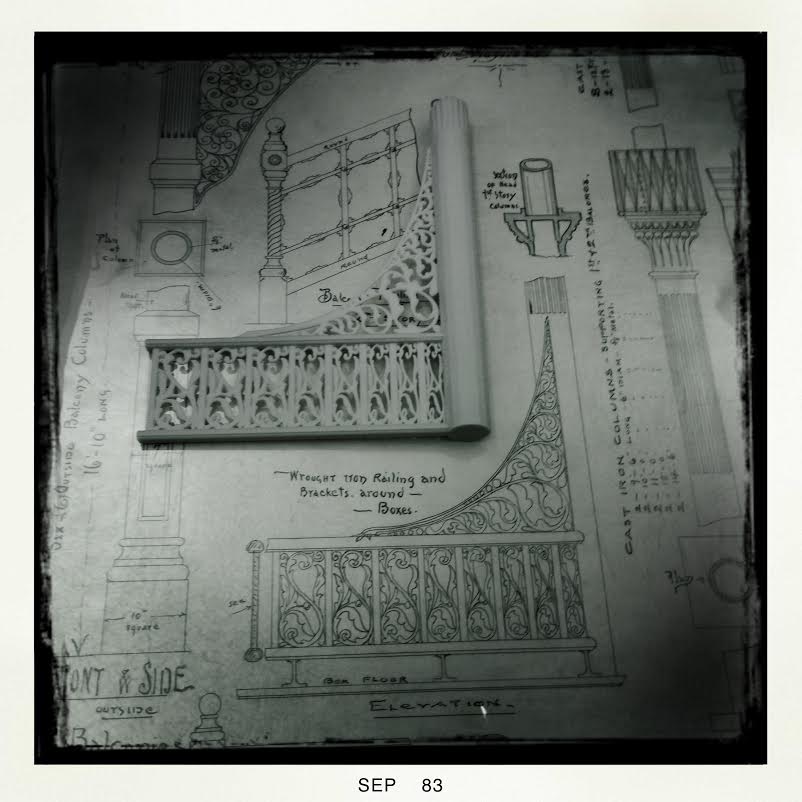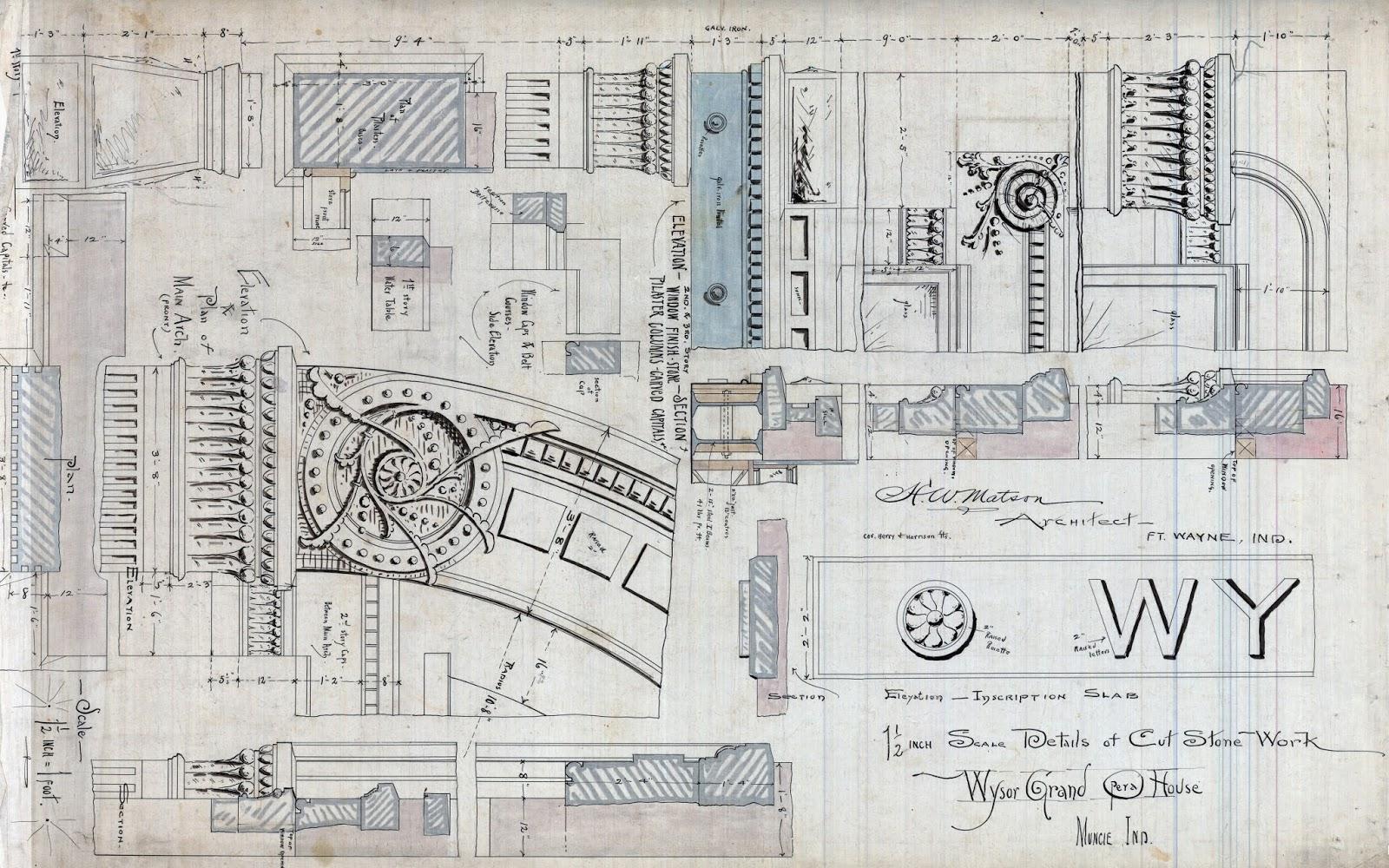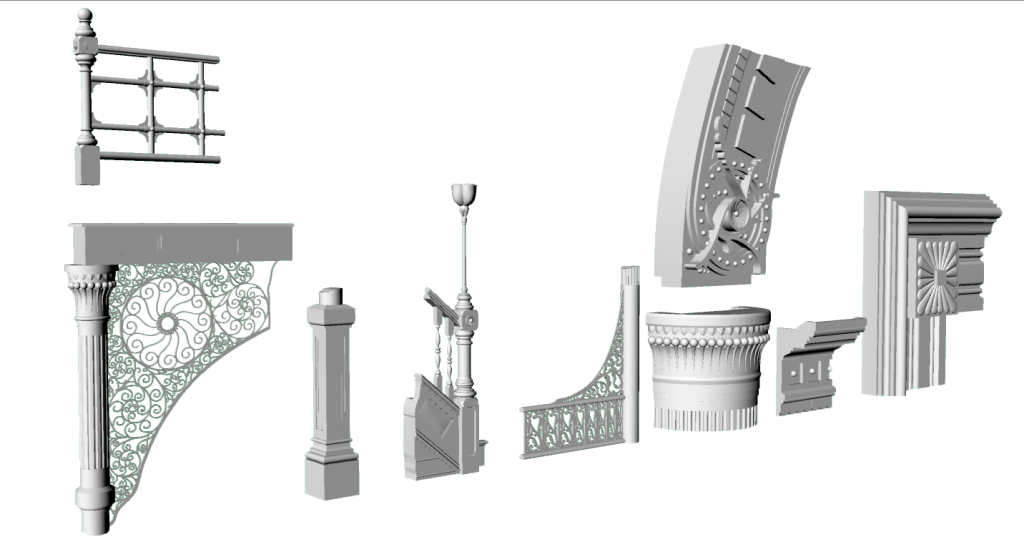3D printing is gradually making its way into educational institutions including high schools and universities throughout the world. Whether it is a high school biology class, a computer graphics course, or a university architecture project, 3D printing definitely provides a new hands-on approach to educating our future workforce.
At Ball State University, 3D printing is being used in more ways than one. Carol Street, Archivist for Architectural Records at the College of Architecture and Planning at Ball State University, is one of these individuals who has seen a tremendous benefit in learning and interest in learning, through the use of 3D printing technology. She started a project at the Drawings + Documents Archive, which is dedicated to preserving the history of Indiana’s built environment.
“We started the Indiana Architecture X3D (IAX3D) project with modeling details and the full building of the Wysor Grand Opera House, a Romanesque Revival building constructed in Muncie, Indiana, in 1891, and torn down in 1967,” Street tells 3DPrint.com. “The project has proven to be an exciting way to get students interested in historic architecture and to look more closely at the actual drawings.”
Taking data from the original, ink-on-linen drawings that were done in 1891, Street had long used them in class sessions to teach students about the history of architecture. The drawings are “extraordinarily beautiful,” according to Street.
“I’ve noticed that architecture students today are more removed from hand drawing (they only really do it in their first year of classes) and much more acclimated to technology,” Street tells us. “I wanted to try to use technology to interpret the drawings in a new and interesting way that might capture their attention and spark their imaginations.”
So she turned to 3D printing, and the results were even more successful than she had ever anticipated. She found that her students who showed little interest in the drawings previously were now drawn to the 3D printed versions, and were spending more time comparing items on the print to those from the original drawings.
The study of the Wysor Grand Opera House is particularly interesting and very useful in studying and talking about architecture. “This building is particularly interesting because it was built during Muncie’s gas boom era and torn down in the 1960s, following the general rise and fall of the town,” explains Street. “Discussing this building often leads to interesting discussions about architecture, urban planning, and, of course, historic preservation.”
For those interested in also recreating this building, which is no longer in existence, the 3D printable files can be downloaded via the Ball State University’s Digital Media Repository, free of charge. Not only is this a great hands-on way of teaching students about historical architecture, but it’s also a tremendous method of preserving history.
As for Street and her students, they aren’t stopping here. Currently they are working on a project which encompasses the designing and 3D printing of pieces of a section of the Baltimore Through Truss Bridge, which was built by the Indiana Bridge Company in 1891.
“My plan is to create a puzzle exercise for students to put together a section of the pin constructed bridge using the original drawings as a guide,” says Street. “It will help teach them how to read drawings and hopefully gain an appreciation for the thousands of Indiana Bridge Company drawings we house here at the archives. I also hope they’ll have fun doing it. Not many students expect to have fun in an archive, so I like to surprise them.”
After that, she has plans to create models of the Ball State University Campus for the university’s 100th anniversary. She hopes to make models from 1918, 1968, and finally 2018, and work on this project will begin sometime next year.
It is evident that Street’s methods of teaching through the utilization of 3D printing technology have garnered her a lot of positive attention from her colleagues as well as her students. Students claim that they have learned a lot from this relatively new way of teaching, and it certainly is a more entertaining method of study when compared to the traditional methods of examining 2-dimensional blueprints. 3D printing has a lot of potential, and its use within the field of education may just provide the greatest benefits.
What do you think? Will the use of 3D printing within architecture classes help make the subject matter more interesting and hands-on? Discuss in the 3D Printed Wysor Grand Opera House forum thread on 3DPB.com.
Subscribe to Our Email Newsletter
Stay up-to-date on all the latest news from the 3D printing industry and receive information and offers from third party vendors.
You May Also Like
Further Understanding of 3D Printing Design at ADDITIV Design World
ADDITIV is back once again! This time, the virtual platform for additive manufacturing will be holding the first-ever edition of ADDITIV Design World on May 23rd from 9:00 AM –...
3D Printer Maker EVO-tech Reborn as NEVO3D — Once More With Feeling
EVO-tech was a 3D printing service and original equipment manufacturer established in 2013 and based in Schörfling am Attersee, Austria. The company produced high-quality material extrusion systems featuring linear bearings,...
3D Systems Brings 3D Printed PEEK Cranial Implant to the U.S. with FDA Clearance
For more than 10 years, 3D Systems (NYSE:DDD) has worked hand-in-hand with surgeons to plan over 150,000 patient-specific cases, and develop more than two million instruments and implants from its...
CDFAM Returns to Berlin for Second Annual Symposium
The second CDFAM Computational Design Symposium is scheduled for May 7-8, 2024, in Berlin, and will convene leading experts in computational design across all scales. Building upon the first event...



































